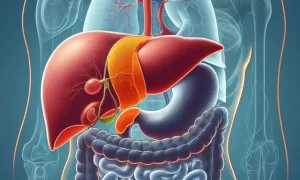Breast cancer risk will increase after lobular tumors detected ?
- Normal Liver Cells Found to Promote Cancer Metastasis to the Liver
- Nearly 80% Complete Remission: Breakthrough in ADC Anti-Tumor Treatment
- Vaccination Against Common Diseases May Prevent Dementia!
- New Alzheimer’s Disease (AD) Diagnosis and Staging Criteria
- Breakthrough in Alzheimer’s Disease: New Nasal Spray Halts Cognitive Decline by Targeting Toxic Protein
- Can the Tap Water at the Paris Olympics be Drunk Directly?
Breast cancer risk will increase after lobular tumors detected ?
- Should China be held legally responsible for the US’s $18 trillion COVID losses?
- CT Radiation Exposure Linked to Blood Cancer in Children and Adolescents
- Can people with high blood pressure eat peanuts?
- What is the difference between dopamine and dobutamine?
- What is the difference between Atorvastatin and Rosuvastatin?
- How long can the patient live after heart stent surgery?
Breast cancer risk will increase after lobular tumors detected ? How much breast cancer risk will increase after lobular tumors are detected in the breast?
LCIS is the abbreviation of lobular carcinoma in situ, and doctors also call it lobular tumor because it is not an aggressive disease.
LCIS (lobular carcinoma in situ) is a collection of abnormal cells that grow in a tube, which is the mammary gland at the end of the breast tube.
In LCIS, abnormally growing cells remain in the leaflets and do not spread to surrounding tissues. People diagnosed with LCIS often have more than one lobule affected.
Most LCIS are hormone receptor positive, which means that estrogen or progesterone will promote the growth of abnormal cells.
Although its name contains the word “cancer”, LCIS is not an aggressive disease. For this reason, some experts prefer to use the term “lobular tumor” rather than “lobular cancer.”
Tumor formation is a collection of abnormal cells.

LCIS is considered uncommon, but it is not clear how many people are affected. This is because LCIS does not cause symptoms and usually does not appear on mammograms. It is often diagnosed because of a breast biopsy.
We know that LCIS increases the risk of being diagnosed with breast cancer. Nevertheless, doctors are not sure how much LCIS will increase breast cancer risk.
A study showed that in the first 6 years after LCIS diagnosis, breast cancer risk increased by about 2% each year.
The study also found that women who received prophylactic hormone therapy after the diagnosis of LCIS were less likely to be diagnosed with breast cancer.
The study included 1,060 women diagnosed with LCIS at the Memorial Sloan Kettering Cancer Center between 1980 and 2009.
When they were diagnosed with LCIS, none of the women was diagnosed with breast cancer. Researchers studied women’s medical records and compared their treatments to women who were later diagnosed with breast cancer.
After 1990, more than 98% of women (1,043) were diagnosed with LCIS. The age at diagnosis of LCIS is 27 to 83 years old.
Most women choose follow-up observation as a treatment method. This means that women should follow a breast examination and screening program to detect any signs of breast cancer as soon as possible:
- 78% (831 women) chose to observe carefully
- ·17% (173 women) chose to observe carefully, but also decided to take preventive hormone therapy drugs
- 5% (56 women) chose to undergo preventive double mastectomy (two women who took preventive hormone therapy drugs later had preventive double mastectomy)
Researchers found that 150 women who had been carefully observed had a total of 168 breast cancers, of which 18 women had bilateral breast cancers. In the first 6 years after being diagnosed with LCIS, approximately 2% of women develop breast cancer each year.
Among women diagnosed with breast cancer:
- 94 women developed cancer in the same breast with LCIS
- 38 women developed cancer in the contralateral breast
- 18 people developed cancer in both breasts
- 109 (65%) of cancers are aggressive, and 85% of these cancers are hormone receptor positive
- 59 (35%) of cancers are DCIS
Compared with women who are carefully monitored, women who are carefully monitored and receive preventive hormone treatment are much less likely to develop breast cancer:
- After 5 years of follow-up, 3% of women who received preventive hormone therapy had breast cancer, while only 7% of women received careful monitoring
- After 10 years of follow-up, 12% of women who have received preventive hormone therapy have breast cancer, and 21%, only women who have been carefully monitored
This difference is statistically significant, which means it may be due to preventive hormone therapy, not just due to chance.
After the diagnosis of LCIS, the following factors do not seem to affect a woman’s risk of breast cancer:
- LCIS diagnosis age
- The state of menopause
- Family history of breast cancer
- LCIS found in both breasts
- LCIS was also found and dysplasia (benign breast disease) was also found
- Breast density
Of the 56 women who decided to undergo preventive bilateral mastectomy, none were diagnosed with breast cancer, but 6 women had breast cancer during preventive mastectomy (3 women had invasive breast cancer) , 3 had DCIS).
If you are diagnosed with LCIS, then this study can provide more information about how much your risk of breast cancer increases because of this diagnosis.
Depending on your unique situation and your habits, you and your doctor may think that you should follow up closely, or may decide to use other strategies to reduce your risk, including taking hormone therapy or preventive surgery.
You and your doctor can work out the best plan for you.
(source:internet, reference only)
Disclaimer of medicaltrend.org
Important Note: The information provided is for informational purposes only and should not be considered as medical advice.



